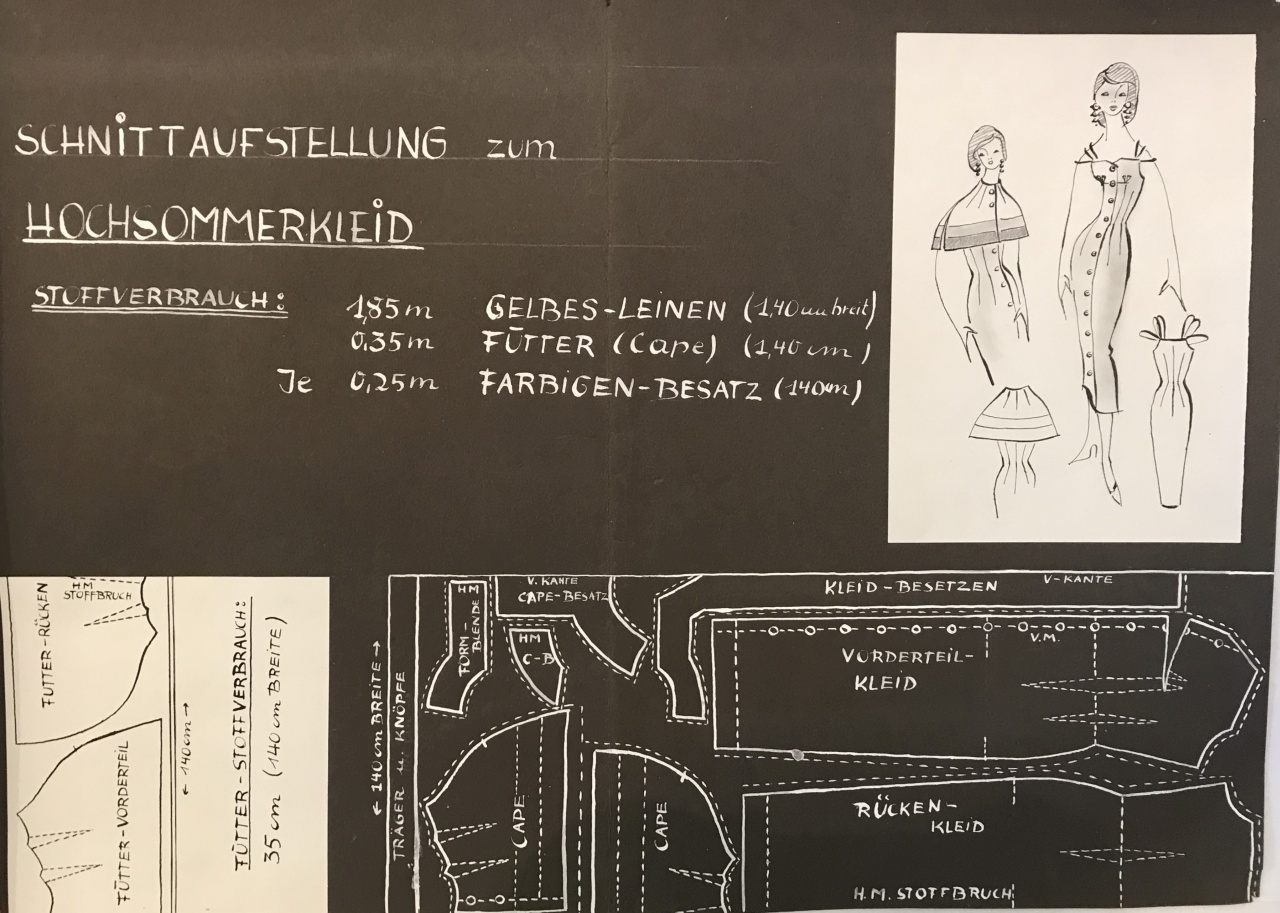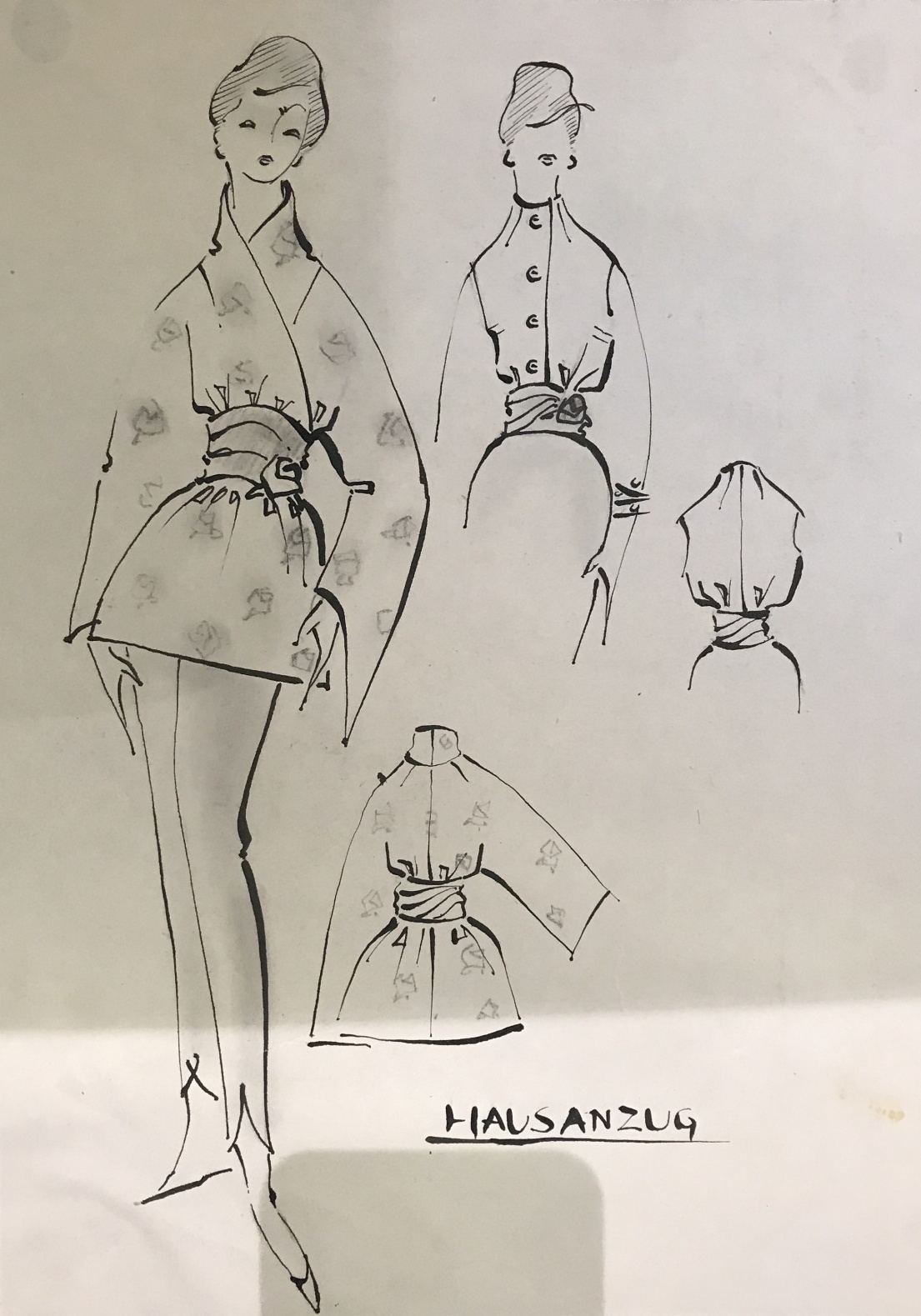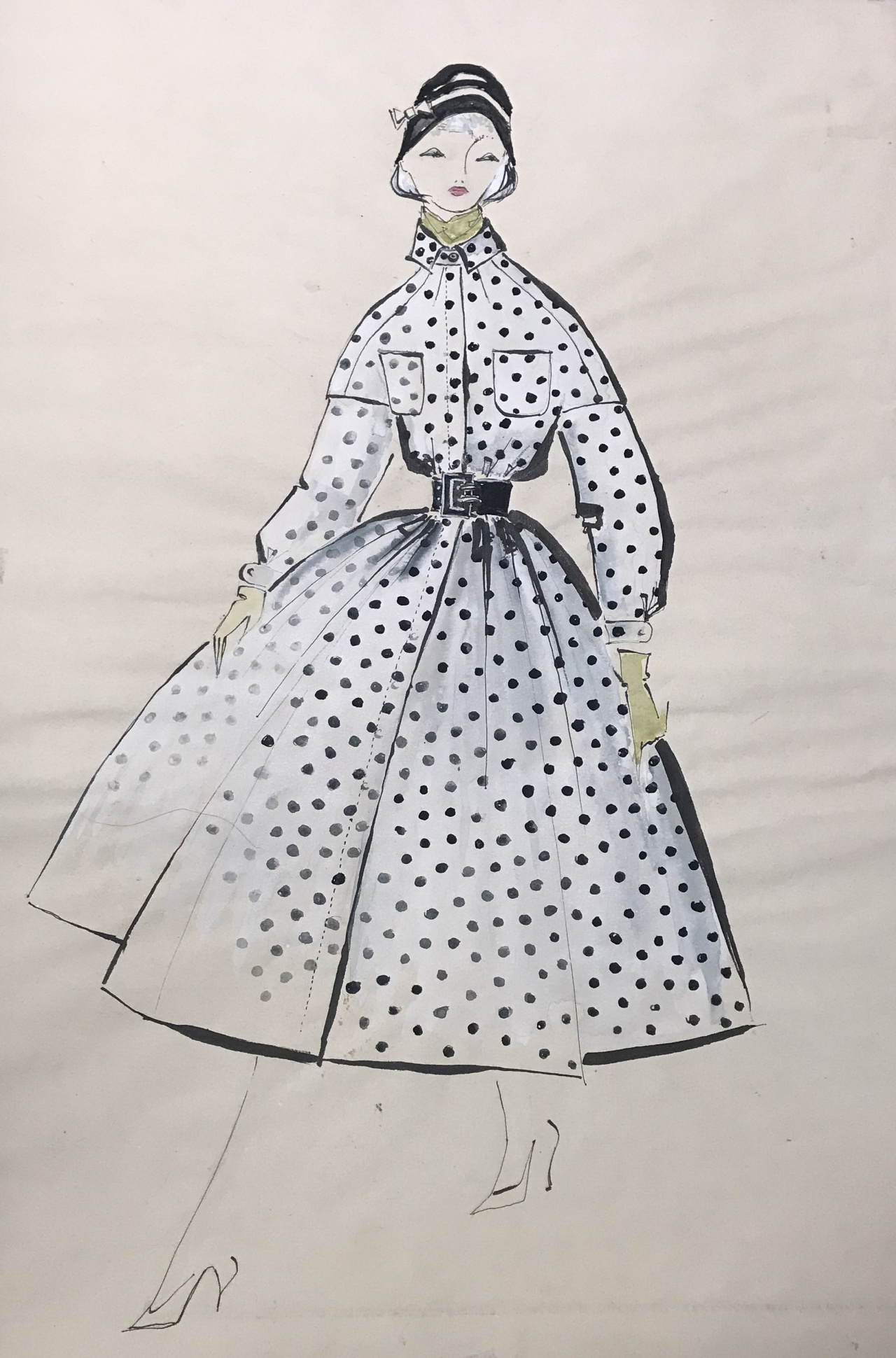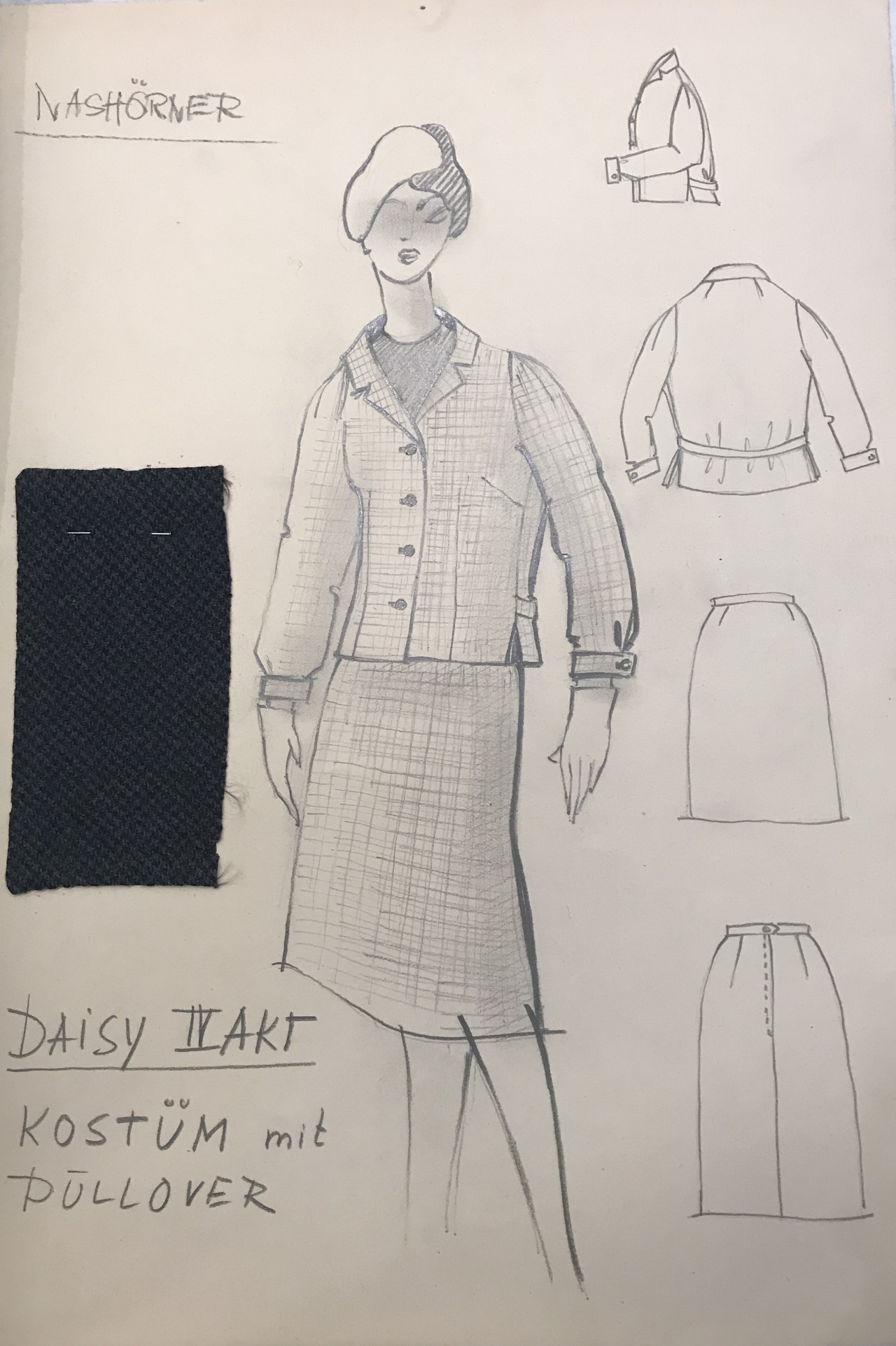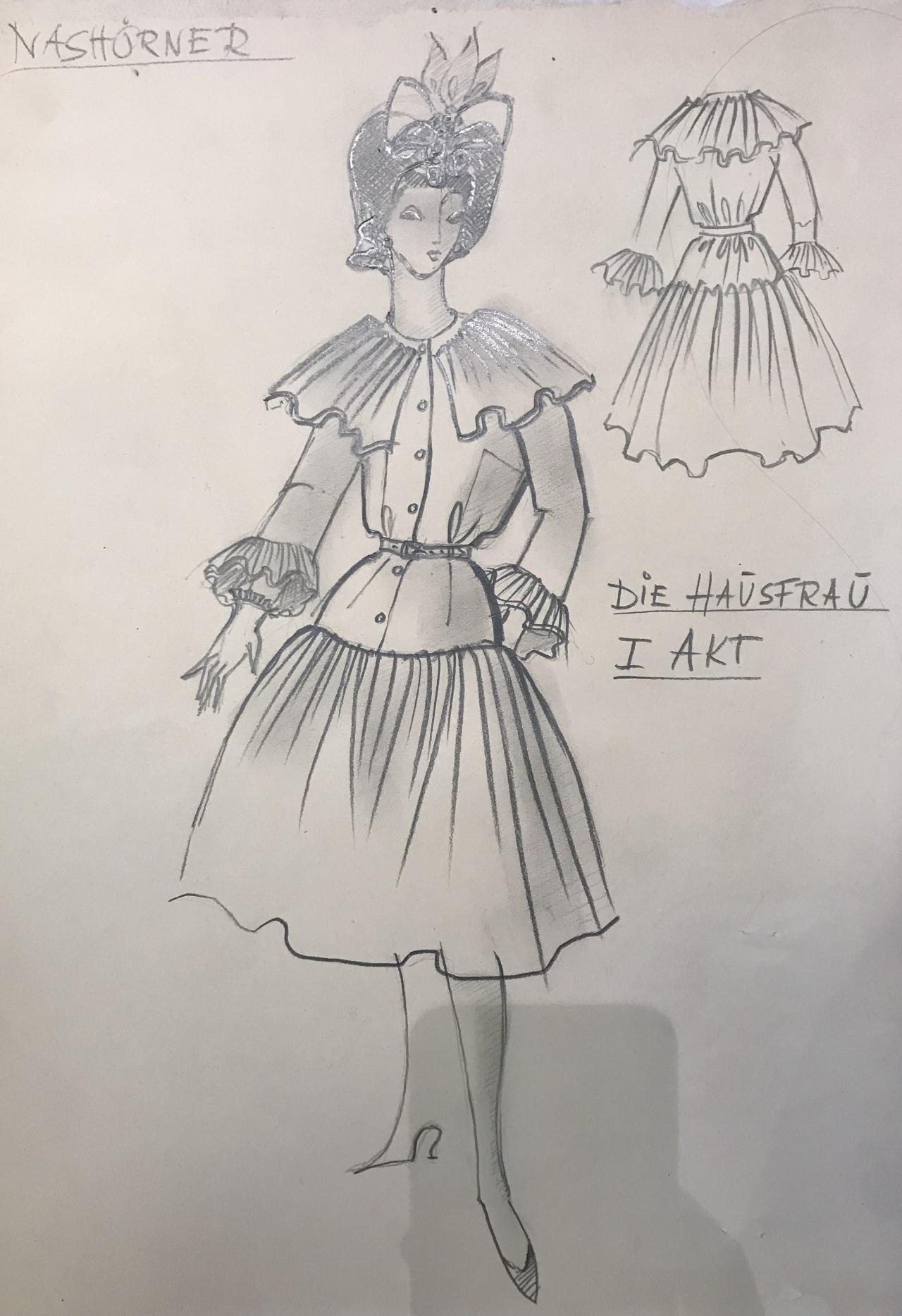The display case in the foyer exhibits some of costume designer Barbara Baum’s early work. Baum’s artistic talent was evident at a young age, and her father – who was a painter and architect – encouraged her natural aptitude for drawing. Her aunt worked as a weaver and fabric designer, and it was she who awakened a passion for fabrics and clothing in Baum. After graduating high school, Baum decided to start a tailoring apprenticeship to learn the craft from scratch. She passed her apprenticeship exam with top marks and was accepted into the Textile and Fashion School of Berlin (HTW). She went on to attend a Meisterschule or “master school” for the trade.
During her studies, Barbara Baum kept afloat with money from her first commissions. At this time, she was living in an apartment sublet by an acting agency, through which she met a number of actors and directors. Meanwhile she was sewing costumes for the Berlin theater houses Vaganten Bühne and Theater am Kurfürstendamm. She designed the costumes for the female roles in the production of Ionesco’s Rhinoceros.
One day, an actress suggested she apply to the public television service for West Berlin, Sender Freies Berlin – where Günther Naumann, set designer and outfitter of some of Peter Lilienthal’s films, was on the commission. Baum first landed a role as assistant to Werner Juhrke, sewing costumes for the TV movie “Premeditated Crime” (FRG 1967, directed by Peter Lilienthal). For Lilienthal’s next movie, Jakob von Gunten (FRG 1971), she was hired as a costume designer. Barbara Baum’s career had begun!
In the left-hand section of the display case is a black sheet of A1 paper. Written across it in white capital letters is the note: “pattern for the midsummer dress.” Below this, Baum has calculated the fabric required for a dress width of 1.4 meters: “1.85 m of yellow linen, 35 cm of lining for a cape, 25 cm each of colored trim.” Displayed to the right of these notes is the design for the midsummer dress: a close-fitting, calf-length strap dress that is buttoned at the front. The shoulders are covered by a cape that hangs over the forearms. The bottom section of the black paper shows the cutting pattern for the dress and lining.
To the right of this are two sketches in portrait format. These ink drawings are on white paper and mounted on black cardboard. The top sketch shows a narrow-waisted day dress with a wide fabric belt; the bottom, a casual kimono-style ensemble consisting of a high-necked top with long, wide sleeves worn over tight pants. The waist is emphasized with a wide fabric belt.
To the right of this are three color sketches depicting:
– A white raincoat with black dots and a wide black belt
– A wide-cut red velvet evening jacket with three-quarter sleeves
– A rain ensemble consisting of a tight skirt and hip-length high-necked rain cape
In the right-hand section of the display case are designs for two earlier commissions. One shows a blue tweed suit with fabric samples of various blue tones and a brushstroke in blue watercolor on a piece of paper. Under the fabric samples is the note: “For this tweed suit (a French fabric) I had the georgette for the blouse undergo extra dyeing according to my color specification! The client has wonderful red blond hair!” The word “red” is underlined twice. Next to the sketch is a contact print of six mini black-and-white photos, showing the tight skirt of the suit on a mannequin. The wide waistband extends up to just beneath the chest, two straps run over the shoulders and cross at the back.
Underneath is the design for a long-sleeved dress. A line of buttons leads down from the left shoulder to below the waist. There is a walking slit in the front of the skirt. The fabric sample features a floral pattern in blue, green and pink. Barbara Baum has added the note: “This dress is light as a feather and pure silk; a very wide-cut dress that is held together only by the belt. It looks a bit heavy in the photo.” To the left of the sketch is a black-and-white contact print of six mini photos showing the dress on a mannequin.
Also exhibited are four designs for Baum’s early works for the theater. Baum designed all costumes for the female cast in the production of Ionescu’s Rhinoceros, which was staged by Wolfgang Spier at the Theater am Kurfürstendamm. On display are three sketches for the role of “Daisy” and one for “The Housewife.” On the top left is a short-sleeved, knee-length summer dress worn by Daisy in Act I. It has buttons that run from the left shoulder to the hem. Attached to the sketch is a pink fabric swatch. To the right of this is Daisy’s costume for Act II in the office: a light blouse with a dark spotted bow at the neck and a knee-length skirt with a belt and a walking slit at the front. Also attached to this sketch are two fabric swatches: one black and one dark with white dots. For Daisy’s appearance in Act IV, Baum has designed a dark checkered suit-dress with a dark sweater. The fabric has a salt-and-pepper trim.
The sketch for The Housewife in Act I is of a dress buttoned at the front to below the waist with a narrow belt and a wide pleated skirt. A collar with wider pleats lies over the shoulders. The tight sleeves extend to the wrists and are decorated at the ends with wide flounces. The costume is completed with a turban-like hat that features a bow above the forehead.

